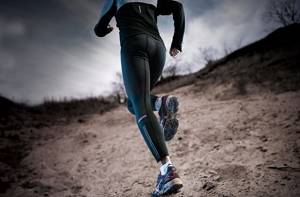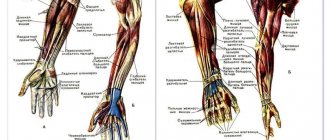Running is the most popular and democratic sport. With the onset of cold weather, many people prefer to use treadmills. But for true lovers, sub-zero temperatures are not a hindrance at all, and the street remains their place for jogging. How to dress correctly to ensure your comfort, avoid colds, and get both benefit and pleasure from your workouts.
Running outdoors in winter: how to dress
The first thing that is best taken into account when choosing sportswear for winter running is the presence of areas on the body with increased heat transfer. In other words, this cooling is a natural phenomenon in which the body triggers thermoregulation. Sweat is most actively produced below the back of the head, in the armpits, in the solar plexus area, above the sternum and in the lower back. The knees and elbows, hands, feet and groin area have increased heat transfer, but they do not emit a lot of sweat.
Running gear should not only keep you warm, but also, just as important, prevent hypothermia from wet clothes.
Professional clothing is created taking these features into account. In areas with high heat transfer, it has good moisture removal and ventilation properties. High quality synthetics are usually used for the first layer. The second layer is warmer, but also allows air to pass through well. Outerwear, such as a windbreaker or a jacket with a membrane, can also be equipped with additional ventilation. Please note that the higher the pulse, the greater the release of heat and sweat.
Clothes for running in winter should be selected according to the principle of multi-layering. In cold weather, you need to dress your body in 3-4 layers of equipment - only then can you comfortably cover long distances in the cold.
- The first layer is aimed at removing moisture from the body and allowing excess heat to pass through.
- The middle layer is needed for thermal insulation and even greater removal of moisture from the skin. This includes fleece products.
- The third layer is aimed at protecting against precipitation and wind. It must have sufficient breathability and allow steam to escape. This will allow the previous two layers to dry easily.
- The fourth layer is needed at particularly cold temperatures. It can be used as additional insulation between layers 2 and 3.
In addition to clothing, accessories are important for winter running. At temperatures below zero, it is recommended to use mittens, a hat, and a bandana. If it is very cold outside, a balaclava with a protective mask can be used to protect the respiratory system.
For winter running you need to choose high-quality equipment from good manufacturers. The following brands are popular:
- Adidas . Offers practical, comfortable and at the same time stylish items for sports. Clothing is equipped with special technologies that provide moisture removal, temperature regulation and weather protection. Girls will love beautiful thermal underwear.
- Nike . This brand's running collections are produced using the multi-layer principle. Soft and pleasant materials are used to wick away moisture and regulate temperature. There are models in bright colors. The outerwear is equipped with reflective details, as well as spacious pockets on the sides.
- Saucony . The American brand produces high-tech outerwear with high functionality. It is made in three layers. There are also protective accessories for winter jogging.
- ASICS . The brand has a very wide range of sportswear. For inclement weather, a line designed for cross-country training is suitable. The clothing is quite thin and light, but at the same time, it warms well and prevents getting wet due to the moisture-proof coating.
- New Balance . New Balance products are comfortable, ergonomic and high quality. There are collections for every taste. The product has only one drawback - the high price.
- Salomon . This brand combines running and crossfit equipment in one line. Those who play sports outdoors can buy insulated vests, pants, and leggings. The range of male and female models is very wide.
- Reebok . The European brand pleases with functionality and comfort, soft fabrics and a large assortment. The company produces trail running products.
The range of winter running clothing is very wide. You can stick to products from one brand or create a suit from products from different series.
Coating
Even fairly busy boulevards can become difficult routes to navigate in winter. The types of coating depend on the presence of precipitation and temperatures. Let's highlight 3 main ones:
loose snow
An unstable coating that loads the legs well, involving a large percentage of muscle fibers in the work. Running on such a surface will significantly complicate your workout, but its effectiveness will also increase. Try to avoid running in such conditions if you have a sore Achilles - increased stress on the ankle can increase inflammation.
Equipment
Pay attention to trail running shoes with medium tread, increased stability and, possibly, the presence of a GTX membrane - models from Asics Fujitrabuco, Hoka Torrent\Speedgoat, Saucony Pereregrine, Salomon Spikecross. If the snow is deep (above the ankle), gaiters will help protect your feet from moisture getting inside your shoes. This is a special accessory - a cuff made of waterproof material that covers the collar area of the sneakers.
Ice
The runner's greatest enemy and the worst surface there can be. The fact is that when we run on a slippery surface, our technique changes for the worse: movements become shorter, the whole body is tense, there is no freedom and relaxation, and, of course, such running does not bring pleasure.
I would try to avoid training on such a surface, because it is also dangerous in case of a fall. But if the situation does not change for a long time, there are some solutions that will minimize the negative.
Equipment
- overhead spikes are special spiked attachments that are pulled onto any shoe. Affordable. but they can fly off during training.
- Special spiked sneakers for running on ice - Asics Fujisetsu, Salomon Snowspike, Icebug DTS, Inov-8 Arctic.
Dense/packed snow
The most comfortable and close to the usual coating with good shock absorption and grip (depending on the air temperature).
Equipment
All examples from the previous categories may be valid here, as well as, in the case of warm weather (around zero), ordinary summer sneakers.
What to run in in winter: shoes and clothes

Let's figure out what shoes and clothes for running should be like in the fall and winter, what parts of the wardrobe you will need, and how to choose them.
Jacket
For winter jogging, you can choose an insulated suit. If it is not very cold, an insulated membrane jacket or vest may be enough to protect against wind and moisture.
Running in a regular winter down jacket is strictly not recommended. It is intended for everyday wear when a person is not exposed to serious stress.
A good option for running outside in winter is jackets equipped with a membrane. This is a special film on the top layer of the product that provides water resistance. The jackets are lightweight. They are versatile and suitable for any weather. They wick away moisture well, protect against cold and allow you to breathe. But such jackets also come in non-specialized varieties, and such options are less suitable for running.
When the weather is very cold, you can use softshell jackets. This technology allows you to combine protection with comfort to wear. The products are in demand among lovers of an active lifestyle. They can also have a membrane, but in this case they will weigh more than just membrane jackets.
Sneakers

It is not recommended to run in regular shoes in winter - they will not last long. Sneakers that are chosen for winter running must have the following characteristics:
- Soft and elastic bottom that will not harden in the cold.
- Clear and grooved pattern on the sole.
- Improved grip.
- Fur on the inner surface. It can also be artificial. The outer part must be protected from moisture.
- The membrane is made of moisture-proof materials that allow breathing.
- It is important to have a shock absorption system.
The height of your shoes should be sufficient to prevent snow from entering. Insoles should be easy to change.
Trousers
You can use either thin running pants that protect from the wind, insulated tights, or insulated softshells. It depends on the weather. The last choice is suitable for temperatures less than minus 10. If it is more than zero degrees outside, tights are enough. If you have a slight disadvantage, you can get by with standard pants or tights with thermal underwear.
Thermal underwear

Thermal underwear is definitely what you need for running in winter. It will protect against discomfort that can be caused by wet clothes and protect the immune system. Thermal underwear helps remove moisture to the upper layers and provides additional underwear.
If you train daily, buy several sets designed for different weather conditions. Men's and women's thermal underwear are practically the same, but regardless of gender, they should be used for winter running.
Sweatshirts
A running jacket is called long sleeve. The products are made from synthetics. They wick away moisture well, retain heat even if wet, and are wear-resistant. They are used as a second layer on thermal underwear under a jacket when it is cold. In the off-season, long sleeves can be used as an outer layer without a jacket or windbreaker.
Masks/bandanas

Strong winter winds sometimes lead to frostbite on the skin on the face. An eye-opening mask or balaclava can help avoid this. It will make running more comfortable and protect you from the cold. It is also useful to use a bandana or scarf to insulate the throat.
A cap
In the fall or warm winter, an insulated baseball cap that covers your ears and neck may be enough. When it's colder outside, opt for a knitted hat.
Gloves
A mandatory element of winter equipment are gloves or mittens. Because without them, jogging will become an unpleasant process, after which the skin of your hands will crack and darken. Therefore, you should not forget about them. You need to buy gloves that are both light and warm. Therefore, you should choose gloves made of wool or knitwear.
Before putting on gloves, you should apply a protective cream to your hands, as exposure to low temperatures has a negative effect on the condition of the skin. And even gloves cannot completely protect them from this.
Rules for choosing clothes for summer jogging
- Running clothing should help the body adapt to weather conditions. In hot weather, the material of the sports uniform should wick away moisture and allow air to pass through. It used to be that cotton clothing was ideal for sports. But this natural material instantly gets wet, which causes an unpleasant odor. It is best to give preference to lightweight sports T-shirts made from synthetic materials that do not absorb moisture.
- The T-shirt should not be too wide, but it is also undesirable for it to fit tightly to the body - irritation may occur on the skin.
- Dress lightly in hot weather. Instead of pants and leggings, it is better to choose shorts. Men can exercise in swimming trunks or sports shorts with a bare torso.
- To avoid sunstroke, wear a hat. This could be a cap, scarf or bandana. The main thing is that the headdress does not fly off during movement, and that you do not have to periodically adjust it.
- Also remember to protect your skin from direct sunlight. 15–20 minutes before going outside, you need to lubricate exposed areas with sunscreen. Avoid exercising outdoors when UV rays are strong (between 11 a.m. and 4 p.m.).

Additional recommendations
The best option would be a set made up of items from different companies.
Experts suggest choosing the best models:
- Puma compression T-shirt;
- Nike thermal pants and hat;
- Adidas jacket;
- Reebok hoodie;
- Asics winter trousers.
The sports industry is developing, creating new clothing collections every year. And its acquisition is an additional incentive to play sports and achieve new victories.











